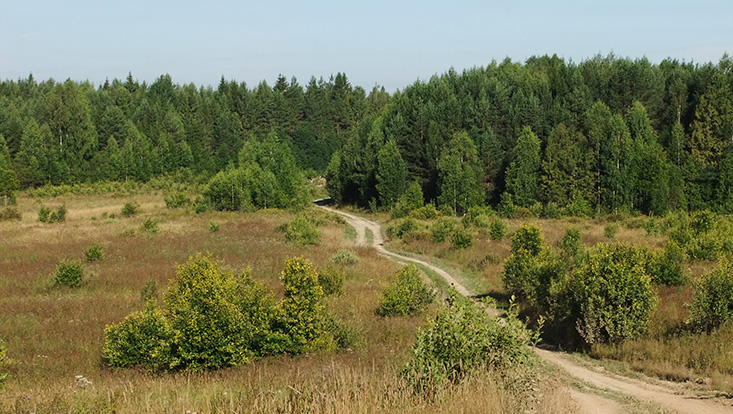Where Europe could improve biodiversity preservation
2 March 2020, by Julika Doerffer

Photo: Vmenkov-creativecommons.org
New targets for preserving biodiversity will likely be formulated at the UN Biodiversity Conference this October; although some goals have successfully been reached, species continue to die out. Consequently, researchers around the globe have called for ideally declaring 50 percent, or at least 30 percent, of the area in all ecoregions as protected. The European Parliament has echoed this demand. CEN researcher Anke Müller has assessed how prepared Europe actually is for an expansion of its protected areas network.
To begin with, the ecologist looked into whether enough biodiverse areas, known as ecoregions, were protected. In a new study, Müller and her colleagues show the extent to which the network of protected areas in the EU’s Member States satisfies a 30-percent or 50-percent goal for protected areas in all 41 ecoregions. What they found: the 30-percent goal has nearly been reached; only ca. six percent more of the EU’s terrestrial area still needs to be added. But in order to reach the 50-percent goal, an additional quarter of EU territory would need to be protected.
For ecoregions in which less than 30 percent of the area was protected, Müller investigated whether there was enough natural area within the regions that could also be protected. She determined that three ecoregions lacked sufficient natural area to reach the 30-percent goal, and that 15 didn’t have enough to reach the 50-percent goal. The majority of the additional area needed could be covered by protecting forests; in addition, in many regions, intensively used forest and agricultural areas would need to first undergo restoration. For example, in the ecoregion “Po Basin Mixed Forests” in Northern Italy, only eight percent of the area is protected. But there are no longer enough natural areas to reach the 30-percent goal; areas would have to undergo restoration. In the Scandinavian and Russian taiga, and in the Cantabrian mixed forests, it’s a different story: here, there are sufficient semi-natural areas to reach both goals.
Using a software tool of her own design, Anke Müller calculated where the EU would need to expand its protected area network in order to close the current gaps in its ecoregions. In the next step, she analyzed where such expansions would be least expensive to implement. The expert drew on land prices for her analysis, which allowed her to gauge how fertile the areas were, and accordingly, how great the economic losses would be for farmers if the areas were made into protected areas. When it comes to implementing the new targets, political decision-makers could start with these least expensive areas.
The study will soon be released in the journal Conservation Biology. It can currently be found online as a pre-published manuscript.
Additional information
Contact
Landscape planner Anke Müller is a member of the Center for Earth System Research and Sustainability (CEN), and is currently pursuing doctoral studies at Universität Hamburg’s Research Unit Sustainability and Global Change.
What is an ecoregion?
Even when protection targets are achieved “mathematically” (e.g. by protecting 30 percent of a given country’s territory), the individual protected areas are often too small to offer adequate protection for local biodiversity. Why? Because the most important aspect concerns which areas are protected: in order to preserve our planet’s biodiversity, ideally, part of every ecosystem needs to be protected, from the Arctic to the tundra, to the Caribbean. In this regard, the global landmass has been divided into 825 ecoregions, strewn across all countries, and our oceans into another 260.
What is the European Parliament’s stance?
In preparation for the UN Biodiversity Conference in October 2020, the European Parliament has called for expanding today’s protected areas in the Member States to encompass 30 percent of EU territory by 2030. In the resolution, it also calls upon the EU to push for a worldwide 50-percent goal during the negotiations.
"European Parliament resolution”, 16. Januar 2020, on the Conference of Parties (COP15) to the Convention on Biological Diversity:
10. [...] propose an ambitious and inclusive Biodiversity Strategy for 2030 that sets legally binding targets for the EU and its Member States, including specific targets to reach at least 30 % of protected terrestrial and marine areas and to restore at least 30 % of degraded ecosystems at Union level by 2030;
28. [...] calls for the EU to push for an increased level of ambition during the negotiations and potentially call for protecting half of the planet by 2050; [...]


